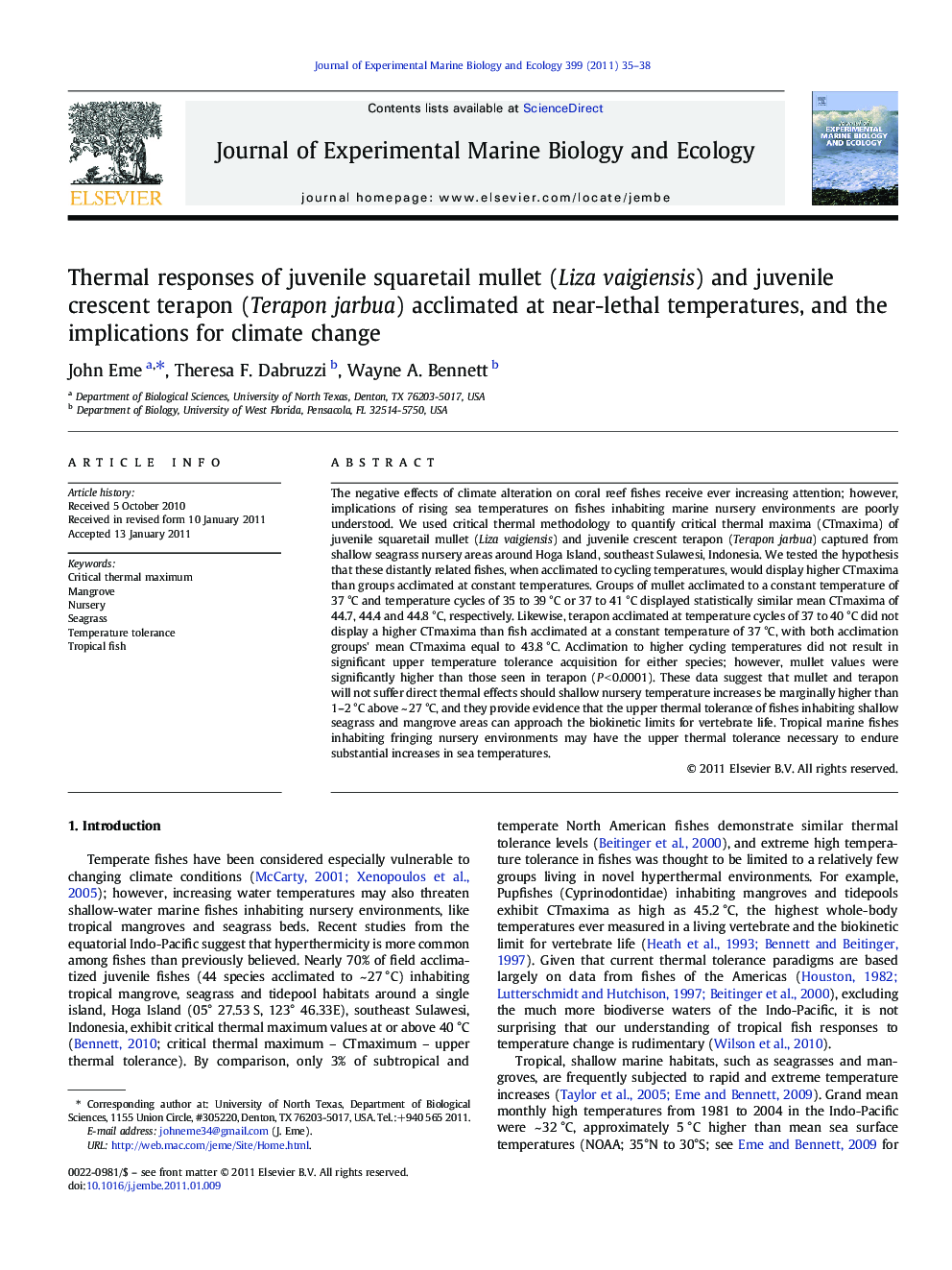| کد مقاله | کد نشریه | سال انتشار | مقاله انگلیسی | نسخه تمام متن |
|---|---|---|---|---|
| 4396439 | 1305824 | 2011 | 4 صفحه PDF | دانلود رایگان |

The negative effects of climate alteration on coral reef fishes receive ever increasing attention; however, implications of rising sea temperatures on fishes inhabiting marine nursery environments are poorly understood. We used critical thermal methodology to quantify critical thermal maxima (CTmaxima) of juvenile squaretail mullet (Liza vaigiensis) and juvenile crescent terapon (Terapon jarbua) captured from shallow seagrass nursery areas around Hoga Island, southeast Sulawesi, Indonesia. We tested the hypothesis that these distantly related fishes, when acclimated to cycling temperatures, would display higher CTmaxima than groups acclimated at constant temperatures. Groups of mullet acclimated to a constant temperature of 37 °C and temperature cycles of 35 to 39 °C or 37 to 41 °C displayed statistically similar mean CTmaxima of 44.7, 44.4 and 44.8 °C, respectively. Likewise, terapon acclimated at temperature cycles of 37 to 40 °C did not display a higher CTmaxima than fish acclimated at a constant temperature of 37 °C, with both acclimation groups' mean CTmaxima equal to 43.8 °C. Acclimation to higher cycling temperatures did not result in significant upper temperature tolerance acquisition for either species; however, mullet values were significantly higher than those seen in terapon (P < 0.0001). These data suggest that mullet and terapon will not suffer direct thermal effects should shallow nursery temperature increases be marginally higher than 1–2 °C above ~ 27 °C, and they provide evidence that the upper thermal tolerance of fishes inhabiting shallow seagrass and mangrove areas can approach the biokinetic limits for vertebrate life. Tropical marine fishes inhabiting fringing nursery environments may have the upper thermal tolerance necessary to endure substantial increases in sea temperatures.
Research Highlights
► How will hyperthermal juvenile fishes respond to sea temperature increases?
► Juvenile marine fishes acclimated near vertebrate's upper thermal limit (40–41 °C).
► CTMaximum values ≥ 43.8 °C.
► Mullet and terapon inhabit shallow nursery habitats (mangroves and seagrasses).
► Fishes from these environments may respond more robustly to increased temperatures.
Journal: Journal of Experimental Marine Biology and Ecology - Volume 399, Issue 1, 15 March 2011, Pages 35–38